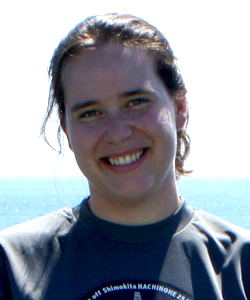Abstract
Utilizing carbon and nitrogen stable isotope incubations I prepared onbaord Expedition 337 and my laboratory’s expertise in FISH-nanoSIMS methodologies, I propose to study deep biosphere potential for anaerobic oxidation of methane (AOM) and diazotrophy (nitrogen fixation). My samples were prepared in parallel with international collaborators at JAMSTEC and MARUM to provide a comprehensive understanding of deep biosphere metabolic capability. This suite of incubations also includes the deepest IODP core ever collected, thereby containing the potential to observe the metabolism(s) of the deepest known life.
Biography
I got my first taste of sub-surface microbiology as an undergraduate at Barnard College in New York City, where I worked with a team of scientists trying to understand the microbiology of arsenic transport in aquifers. After graduating I worked for the National Oceanic and Atmospheric Administration for two years and found a love of life at sea. Through IODP, I was able to combine both of my interests in the deep biosphere and marine research on Expedition 337 as a part of the team of microbiologists searching for life in a deeply buried coalbed. This research is now a core part of my graduate studies in the geobiology program at the California Institute of Technology.







